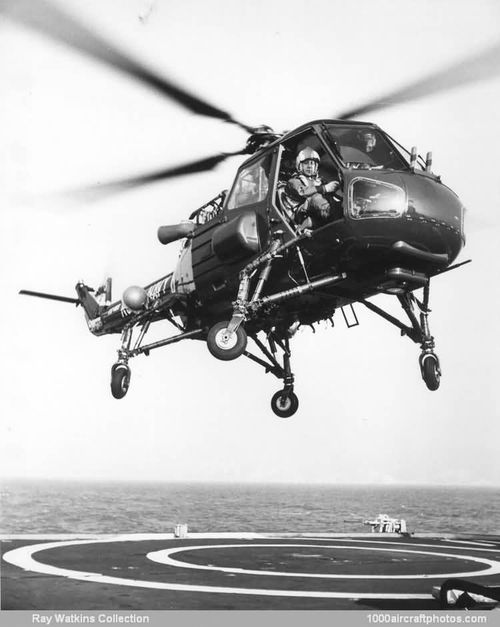11/30/2010. Remarks by Ray Watkins: "In 1957 Saunders-Roe began development of its first turbine-powered helicopter, the P.531, which was fitted with a 400 shp Blackburn Turmo 600 shaft turbine. The prototype P.531 (G-APNU) flew on 20 July 1958 and was followed by three P.531-0 models (G-APNV, XN333 and XN334), with the latter two aircraft evaluated by the Royal Navy.
A refined version (the P.531-2) was developed for the military market with a 650 shp Blackburn A.129 (Nimbus Mk.3) and had an all-up mass of 5,000 lb (2,270 kg) compared to 3,800 lb (1725 kg) for the P531-0. The first P.531-2 (G-APVL) was fitted with landing skids (as were all the earlier models) and was evaluated by the British Army (registered XP116) as the Sprite AH.Mk.1.
The helicopter division of Saunders-Roe was absorbed by Westland in August 1959. The British Army Air Corps placed a production order for eight P.531-2s just before the Westland takeover and this was followed by an order for 40 which were produced by Westland as the Scout AH.1.
Royal Navy evaluation of XH333 and XN334 by No 771 Squadron for 18 months involved hundreds of landings on small frigates to establish a satisfactory landing technique as well as general aircraft development. During the trails some 20 different landing gear configurations were tested, including skids with suction cups on each end, skids with long-stroke oleo legs and four-wheeled units; with a four-wheel fully castoring and lockable system being selected.
An order for a pre-production batch of Sea Scouts HAS.1s was placed in September 1961, the type name was subsequently changed to Wasp. Pictured is the first pre-production Wasp HAS.1 that was first flown at White Waltham on October 28, 1963, initially with 'Class B' marking G-17-1, later it received serial XS463, and was subsequently used by the Westland Experimental & Flight Trials Flight until the early 1970s. By 1975 it had become an instructional airframe, coded A2647, presently it is preserved at the Gatwick Aviation Museum, Gatwick."
